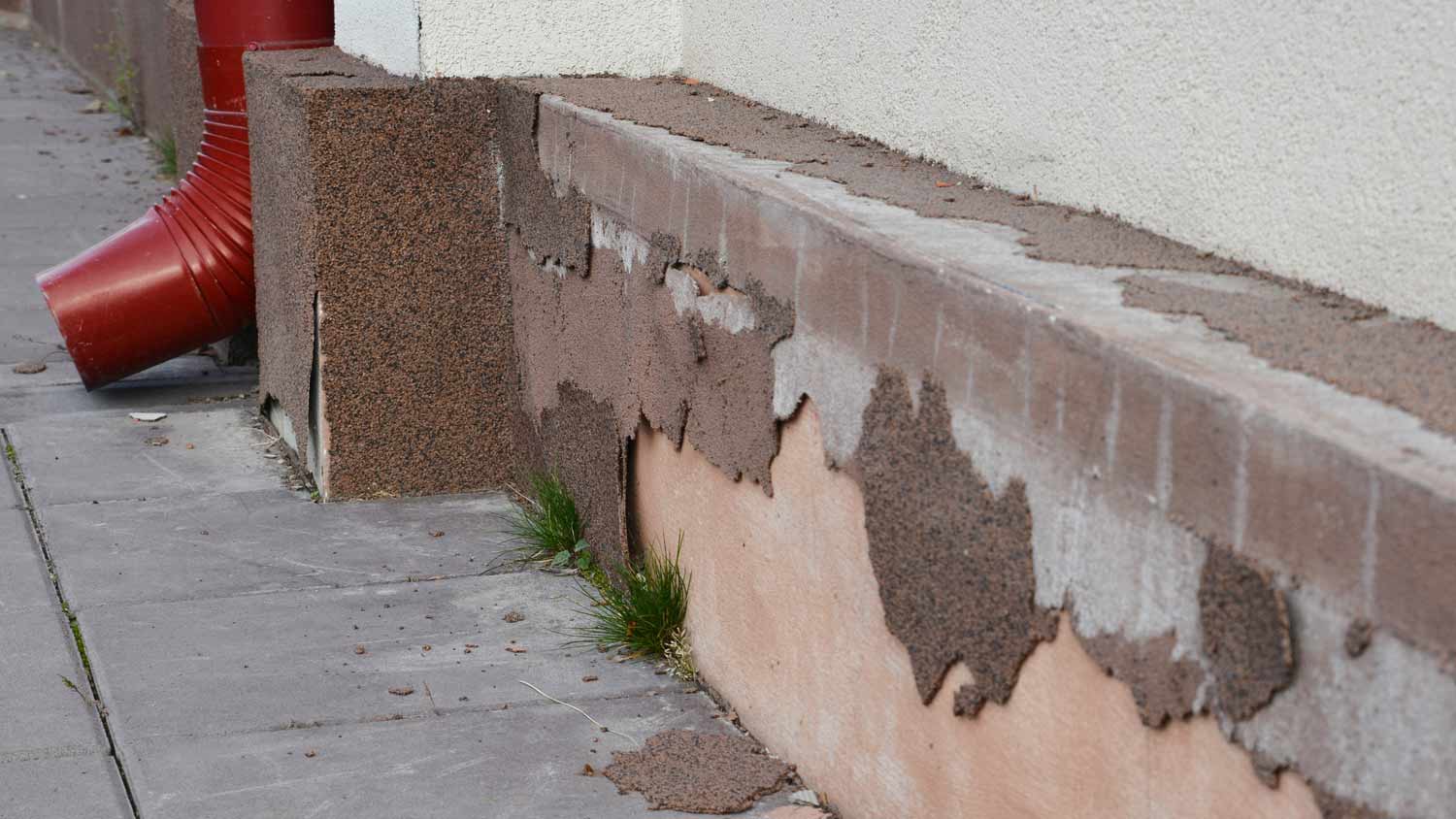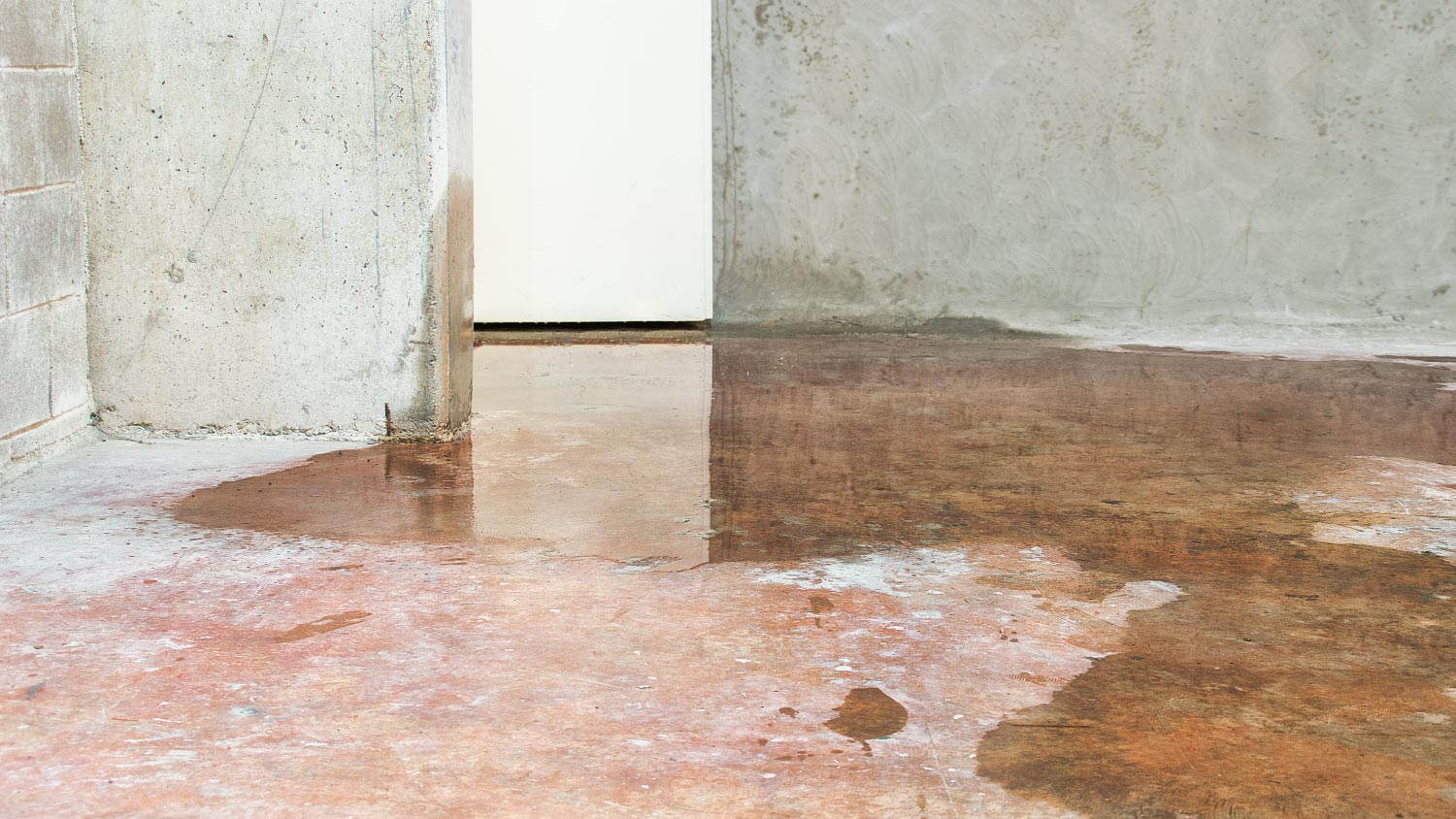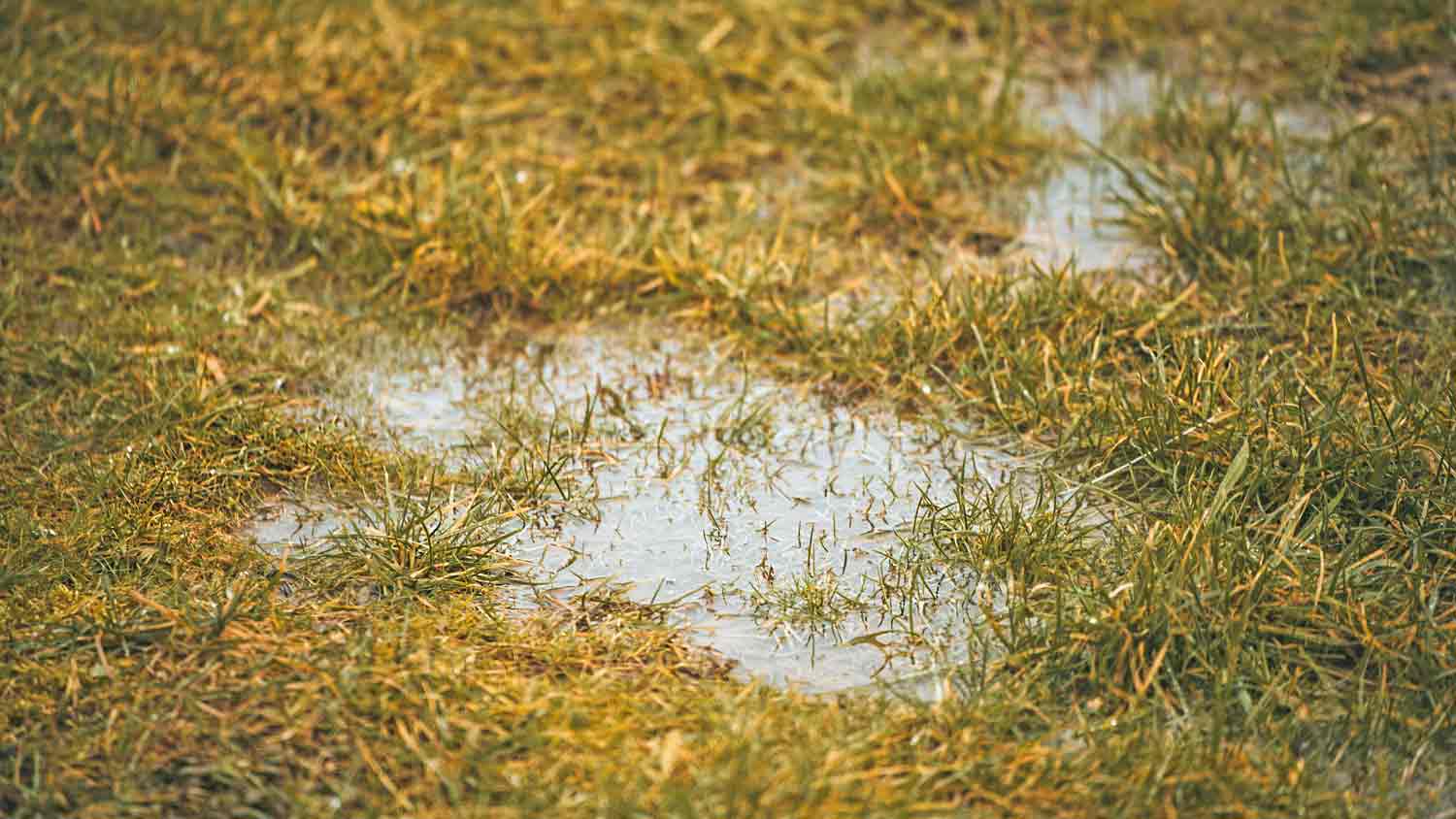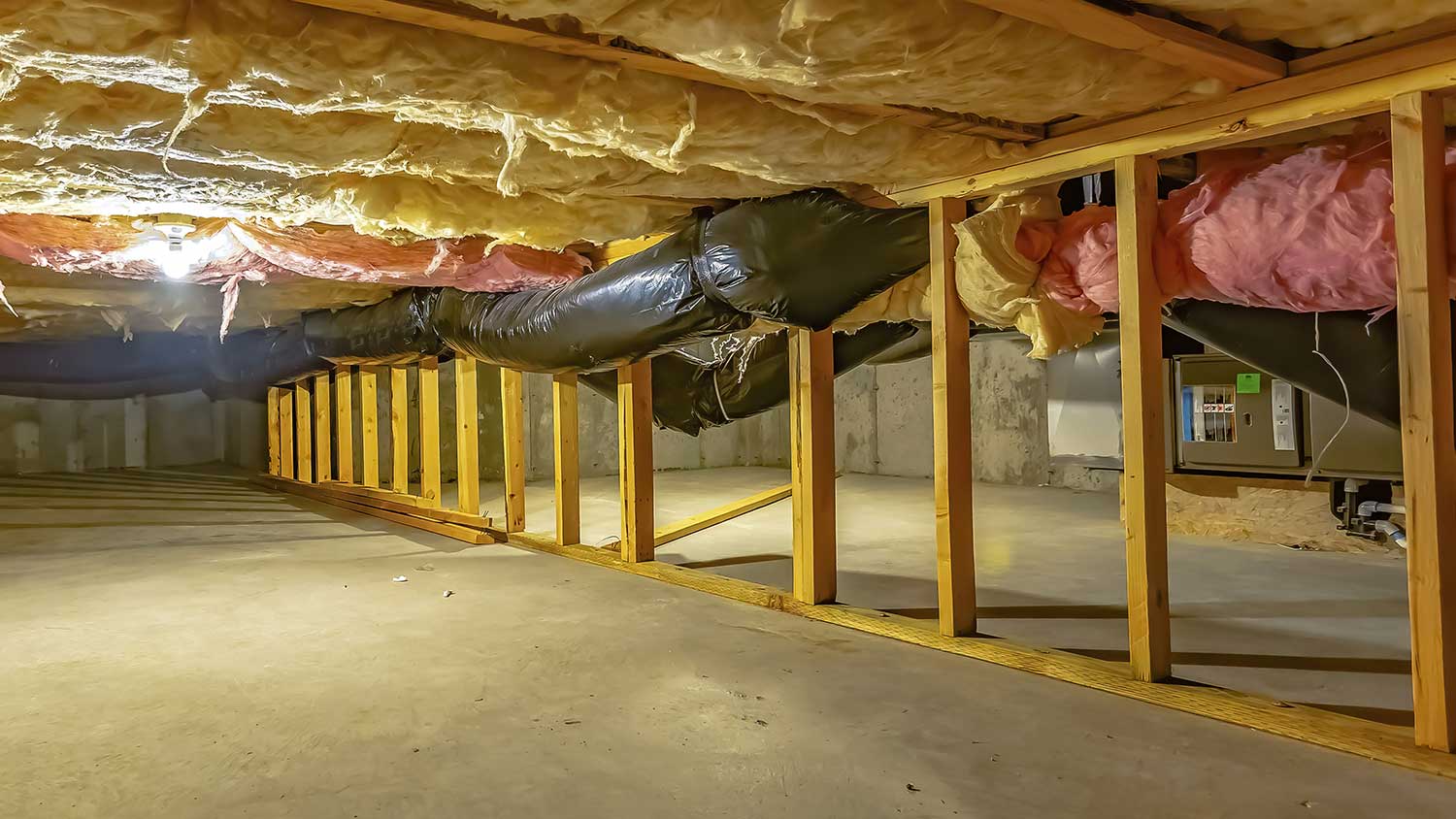
Who installs french drains? Learn which pros to hire, other options, and how pros get it done. Start your french drain hiring guide now.
It costs $4,620 to install a drainage system for most homeowners, and the price often ranges from $2,145 to $7,162. Call a pro to get a quote based on the type of drainage system you want.


Drainage systems cost $10 to $25 per linear foot on average.
French drains start at $500, while trenches and other systems start at $3,000 or more.
Soil conditions, yard size, and drainage system depth are among the main cost factors for this project.
Yard drainage systems carry different material and installation requirements, influencing total costs.
This article was created using automation technology and thoroughly fact-checked and edited by HomeAdvisor Editor Ryan Noonan.
Installing a drainage system in your yard costs $4,620 for most people, but project costs can potentially range from $800 to $15,000. Your costs will depend on factors like yard size, soil conditions, and the type of drainage system, averaging $10 to $25 per linear foot. By budgeting properly and hiring a professional, you can ensure your system effectively prevents water damage and protects your home's foundation.
Since drainage systems cost between $10 and $25 per linear foot, the size of your yard is a major cost factor. Larger yards need more catch basins, longer drainage pipes, and extra labor and materials, which increases your overall costs. The layout and design also get more complex in bigger areas and can require multiple types of systems, especially if your yard has different terrains.
| Yard Size (Square Feet) | Linear Feet of Drainage | Cost Range |
|---|---|---|
| 500 | 50–100 | $500–$2,000 |
| 750 | 75–150 | $750–$2,000 |
| 1,000 | 100–200 | $1,000–$5,000 |
| 1,250 | 125–250 | $1,250–$6,250 |
| 1,500 | 150–300 | $1,500–$7,500 |
| 2,000 | 200–400 | $2,000–$10,000 |
| 2,500 | 250–500 | $2,500–$12,500 |
The type of drainage system appropriate for your home depends on the severity of flooding, the size of the yard, its terrain, and your budget. For example, French drains and downspout extensions are simple and cost-effective solutions, but they’re not always adequate for more significant drainage needs. Trench drains and dry wells can accommodate larger amounts of water or drainage challenges. These systems are often combined for comprehensive drainage solutions.
The layout of your yard also influences the drainage system and design. Decks, patios, and other hardscaping can block natural water flow and require specialized design to avoid pooling water and erosion. Design is particularly important in areas close to your home—proper drainage minimizes the risk of basement flooding, foundation damage, soil erosion, and other concerns. Your contractor can assess your yard to determine the ideal design.
| Drain Type | Total Cost Range |
|---|---|
| French drain | $10–$50 per linear foot (up to $100 for complex installs) |
| Trench or channel drain | $30–$100 per linear foot (up to $150 for complex installs) |
| Underground downspouts | $200–$2,000 each |
| Concrete catch basin | $2,000–$5,000 each |
| Plastic catch basin | $200–$500 each |
| Dry well | $1,600–$4,800 |
| Window well drain | $1,000–$2,500 |
Exterior French drains cost an average of $10 to $50 per linear foot, with complex installations costing up to $100 per linear foot. Location is a factor for French drains—for example, surface drains in yards and other easy-to-access areas cost far less than excavating the base of a foundation and adding a sump pump. There are also different types of French drains to account for specific terrain challenges.
| Type of French Drain | Cost per Linear Foot |
|---|---|
| Curtain | $10–$25 |
| Deep | $30–$70 |
| Exterior | $10–$50 |
| Interior | $40–$100 |
| Yard trench | $30–$90 |
Hiring a local drain contractor for installation averages $50 to $100 per hour or $600 to $7,200 in total. Depending on your project, they might charge hourly or offer a flat rate. Most installations take a few days, but more complex projects can take a week or longer. A crew of two or three people will work on your project. If your yard is hard to access, expect higher costs due to extra demolition, excavation, and other work.
You’ll also have to budget for site prep, landscaping and hardscaping repair, permits, and any add-ons you want.
Preparing your site for a drainage system can significantly impact costs. If your yard has rocky, clay-heavy, or challenging soil, you might need specialized excavation and land clearing, which costs between $1,400 and $6,050. Removing trees, bushes, and roots or breaking up concrete can also add to the costs.
If your yard has active pooling or flooding issues, it likely needs grading to ensure water and drainage flow in the correct direction. Grading costs $1,025 to $3,300.
Drainage installation can affect your landscaping and hardscaping, such as patios, walkways, and driveways. Basic landscape repair for grass and mulch starts at around $200, while more significant restoration can cost between $1,275 and $6,050—or even more than $10,000. But this can also be a great opportunity to add soil amendments, native plants, and other landscape upgrades that improve natural drainage and lawn health.
Installing drainage under concrete or other outdoor structures likewise requires replacements or upgrades. Expect to pay about $800 to $8,000 for various driveway repair costs. Other expenses include:
Driveway sealing: $110–$1,500
Driveway leveling: $650–$1,775
Walkway repair: $1–$15 per square foot
Paver patio installation: $2,400–$7,000
You'll likely need a building permit to install or modify major systems or structures, costing between $400 and $2,300. The permit cost depends on the extent of plumbing, excavation, demolition, and other work involved. Most contractors include this cost in your drainage system installation estimate.
Certain add-on systems or features can enhance the performance of your drainage system. Sump pumps, for example, are necessary for basements in regions prone to heavy rainfall or flooding.
Rain garden: $500–$3,000
Swale/irrigation ditch: $5–$15 per linear ft.
Retaining wall: $3,200–$9,200
Sump pump: $1,200–$2,500
Basement waterproofing: $6–$15 per sq. ft.
Installing a drainage system in your yard helps protect and potentially increase the value of your home. While the system itself doesn’t always directly increase your home’s value, reliable drainage offers several indirect benefits that add to overall property appeal. These benefits include:
Prevents basement flooding and water damage
Protects foundations from water damage and shifting due to soil erosion
Encourages proper lawn drainage, supports healthy landscaping, and minimizes issues related to pests
Can reduce insurance premiums in areas prone to flooding
Installing a yard drainage system can be a significant investment, but there are ways to save money without compromising quality. Here are some cost-saving strategies:
Choose the right drainage system for your needs: Opt for a system that effectively addresses your drainage issues without unnecessary complexity. For example, a French drain might be sufficient instead of a more expensive trench drain.
Plan during dry seasons: Schedule installation during dry weather to reduce labor time and potential complications, which can save on overall costs.
Do some prep work yourself: If possible, handle minor tasks like clearing debris or small landscaping prior to installation to reduce labor charges.
Reuse materials when appropriate: Consult with your contractor about reusing excavated soil or existing materials to save on material costs.
Maintain your system regularly: Regular maintenance prevents costly repairs or replacements in the future, protecting your initial investment.
No place is more important than your home, which is why HomeAdvisor connects homeowners with local pros to transform their houses into homes they love. To help homeowners prepare for their next project, HomeAdvisor provides readers with accurate cost data and follows strict editorial guidelines. We surveyed thousands of real customers about their project costs to develop the pricing data you see, so you can make the best decisions for you and your home. We pair this data with research from reputable sources, including the U.S. Bureau of Labor Statistics, academic journals, market studies, and interviews with industry experts—all to ensure our prices reflect real-world projects.
From average costs to expert advice, get all the answers you need to get your job done.

Who installs french drains? Learn which pros to hire, other options, and how pros get it done. Start your french drain hiring guide now.

Learn who to call for foundation repair. Compare foundation repair contractors vs structural engineers and get clear steps to fix issues today.

Wondering who inspects home foundations? Learn when to call a structural engineer vs. a home inspector and what each pro checks.

Who to call for water in the basement or crawl space? Learn whether to hire a plumber, contractor, or structural engineer and what to expect

Learn who to call for drainage problems in the yard. See if landscaping pros or sprinkler repair fit your issue, plus costs and steps to plan now.

Wondering who inspects crawl spaces? See if a home inspector or crawl space contractor should handle your crawl space inspection and what to expect.